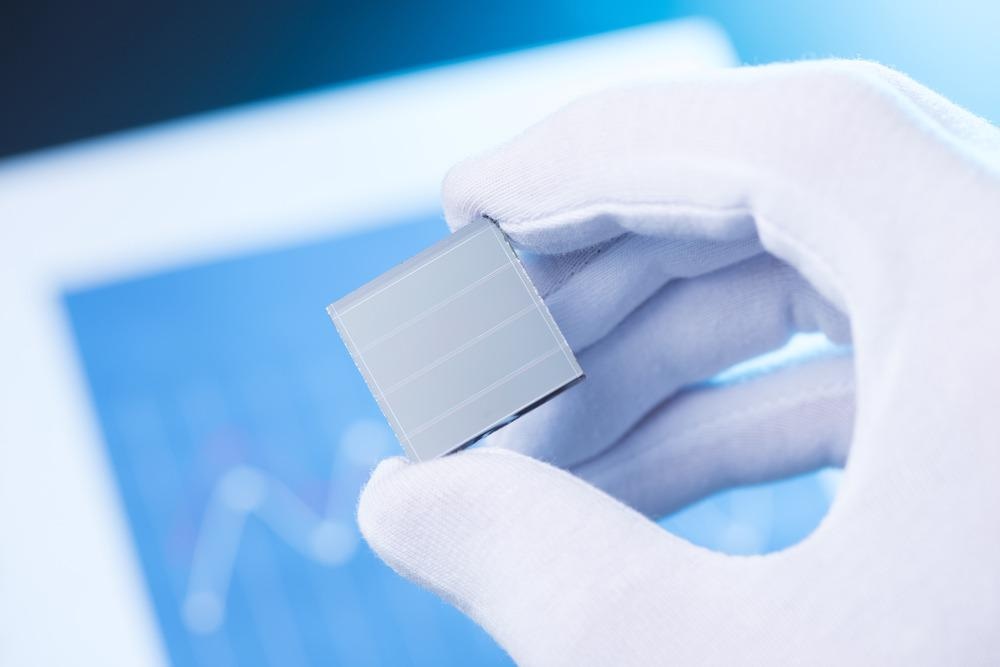Surface reflectance is a measure of how much of the incident light is reflected by a given surface. For optical applications driven by the absorption of light, minimizing surface reflectance is desirable as it enhances the device's efficiency. Ideally, devices such as solar cells want to achieve the highest possible light absorption versus reflectance to maximize the available energy for conversion into electricity.

Image Credit: nevodka/Shutterstock.com
In practical terms, this means shaping solar cells to 'trap' light in their structure. Each time a photon interacts with the photovoltaic cell, there is a certain probability it will be absorbed or reflected. If the solar cell is structured, there are multiple bounces back and forth to recapture any reflected photons, which enhances the probability of the necessary absorption event occurring. Energy from this event can then be utilized within the cell.
Many flat silicon solar cells have surface losses due to reflection as high as 40 %1 . To reduce this, some solar cell designs make use of silicon and titanium dioxides as a surface coating to reduce losses. However, these materials only work over a limited spectral range of specific incidence angles, limiting their use.
There are also practical considerations when designing anti-reflective coatings or structures. For example, they need to have good adherence to the front of the cell and avoid any disruption to the functioning of the photovoltaic.
Other currently used technologies for the reduction of solar cell reflectance include antireflection coatings. These are very thin layers of dielectric materials where the layer thickness is tuned to ensure that all reflected waves interfere destructively, but all light that would transmit into the semiconductor below interferes so it can pass through. While antireflection can be very successful, it typically only works over a limited bandwidth range and is ineffective over the entire solar spectrum.
Nanofabrication
An alternative way of reducing the reflective light losses on solar cells is to use nano-structuring techniques. A recent study has shown that photonic quasi-crystals can be used to reduce the reflectivity of solar cells across most of the visible spectrum. While the reflectance reaches 0.35 around 300 nm, it remains low – around 0.1 - across the rest of the 450 – 1100 nm range.
Photonic quasi-crystals are nanoscale structures with many similar properties to standard crystals but do not have a consistent spatial periodicity. Photonic crystals, or quasi-crystals, are dielectric structures whose properties can be affected by light.
Their manufacture requires the use of nanoscale lithography techniques, and the level of control with such techniques means that the underlying structures can be tailor-made for the application at hand.
The team trialed numerous domain sizes for the photonic quasi-crystals as well as different pitch structures. This is because the geometry and changes in the photonic crystal or quasi-crystal lattice structure affect the resulting dispersion bands and optical properties.
Specific low fill fractions resulted in solar cells with the same reflectivity as their uncoated silicon counterparts but with a depth of 1 µm; the 12-fold lattice types and sunflower structures turned out to be the most effective in reducing surface reflections.
The significance of this work is not just in establishing optimal structure and conditions for these particular photonic quasi-crystals. Here, researchers demonstrated that the air fill fraction and hole depth were the most important engineering considerations for reducing unwanted reflectivity. This is key in showing that photonic quasi-crystals have an important and practical role in future photovoltaic devices.
Nanotechnology in Solar Cells
While silicon remains the most dominant material for solar cells on the market, several alternative technologies are showing great promise with their conversion efficiency gains, including the use of materials such as perovskites. One of the main challenges with silicon-based photovoltaics is that the silicon used must be extremely high purity and requires incredibly energy-intensive processing at very high temperatures.
As well as improving factors such as the reflectivity of cells, nanotechnologies, and nanoscale engineering are improving many aspects of photovoltaic devices. Examples include new fabrication methods to design smaller and more cost-efficient cells and create media such as carbon nanostructures that may provide a viable alternative to silicon-based devices.3
As nanofabrication methods such as electron and ion beam lithography gradually become more accessible, nanoscale engineering may offer a route to developing more cost-effective solar cells. For example, the addition of nanoparticles can help enhance light-harvesting efficiencies and improve device performance.3 Moving away from rigid silicon cells to thinner, more flexible devices based on organic polymers will also open up new possibilities for incorporating solar cells into building design – such as using transparent cells as part of windows.4
Continue reading: What Does an Alternative to Silicon-Based Solar Cells Look Like?
References and Further Reading
Srivastava, S. K., Kumar, D., Singh, P. K., Kar, M., Kumar, V., & Husain, M. (2010). Excellent antireflection properties of vertical silicon nanowire arrays. Solar Energy Materials and Solar Cells, 94(9), 1506–1511. Available at: https://doi.org/10.1016/j.solmat.2010.02.033
Mercier, T. M., Rahman, T., Krishnan, C., Khorani, E., Shaw, P. J., Pollard, M. E., Boden, S. A., Lagoudakis, P. G., & Charlton, M. D. B. (2021). High symmetry nano-photonic quasi-crystals providing novel light management in silicon solar cells. Nano Energy, 84, 105874. Available at: https://doi.org/10.1016/j.nanoen.2021.105874
Ahmadi, M. H., Ghazvini, M., Nazari, M. A., Ahmadi, M. A., Pourfayaz, F., Lorenzini, G., & Ming, T. (2019). Renewable energy harvesting with the application of nanotechnology: A review. International Journal of Energy Research, 43(4), 1387–1410. Available at: https://doi.org/10.1002/er.4282
Davy, N. C., Sezen-Edmonds, M., Gao, J., Lin, X., Liu, A., Yao, N., Kahn, A., & Loo, Y.-L. (2017). Pairing of near-ultraviolet solar cells with electrochromic windows for smart management of the solar spectrum. Nature Energy, 2(8). Available at: https://doi.org/10.1038/nenergy.2017.104
Disclaimer: The views expressed here are those of the author expressed in their private capacity and do not necessarily represent the views of AZoM.com Limited T/A AZoNetwork the owner and operator of this website. This disclaimer forms part of the Terms and conditions of use of this website.